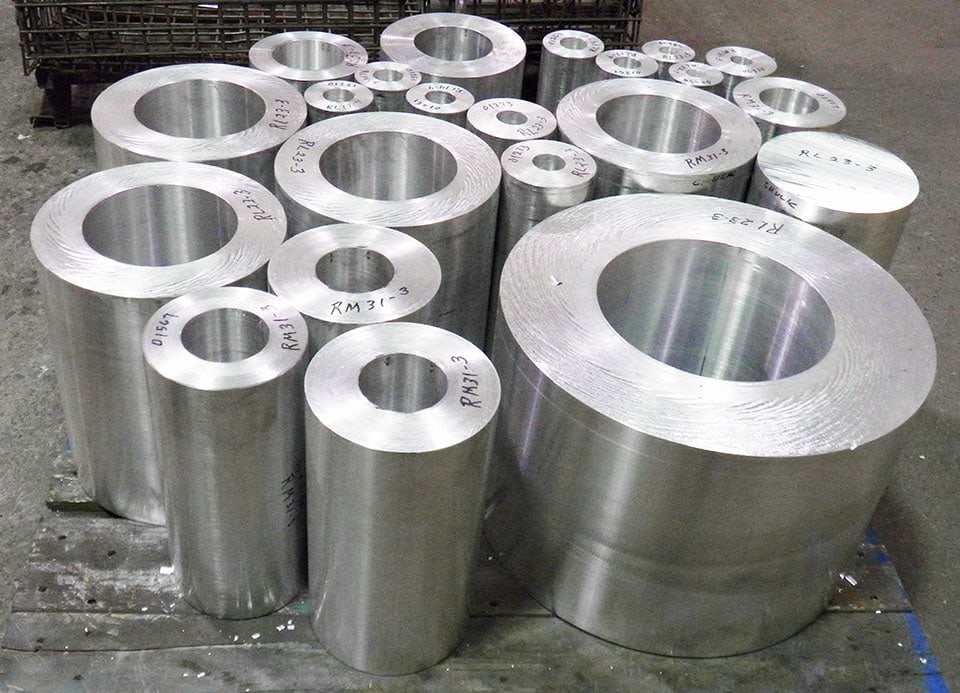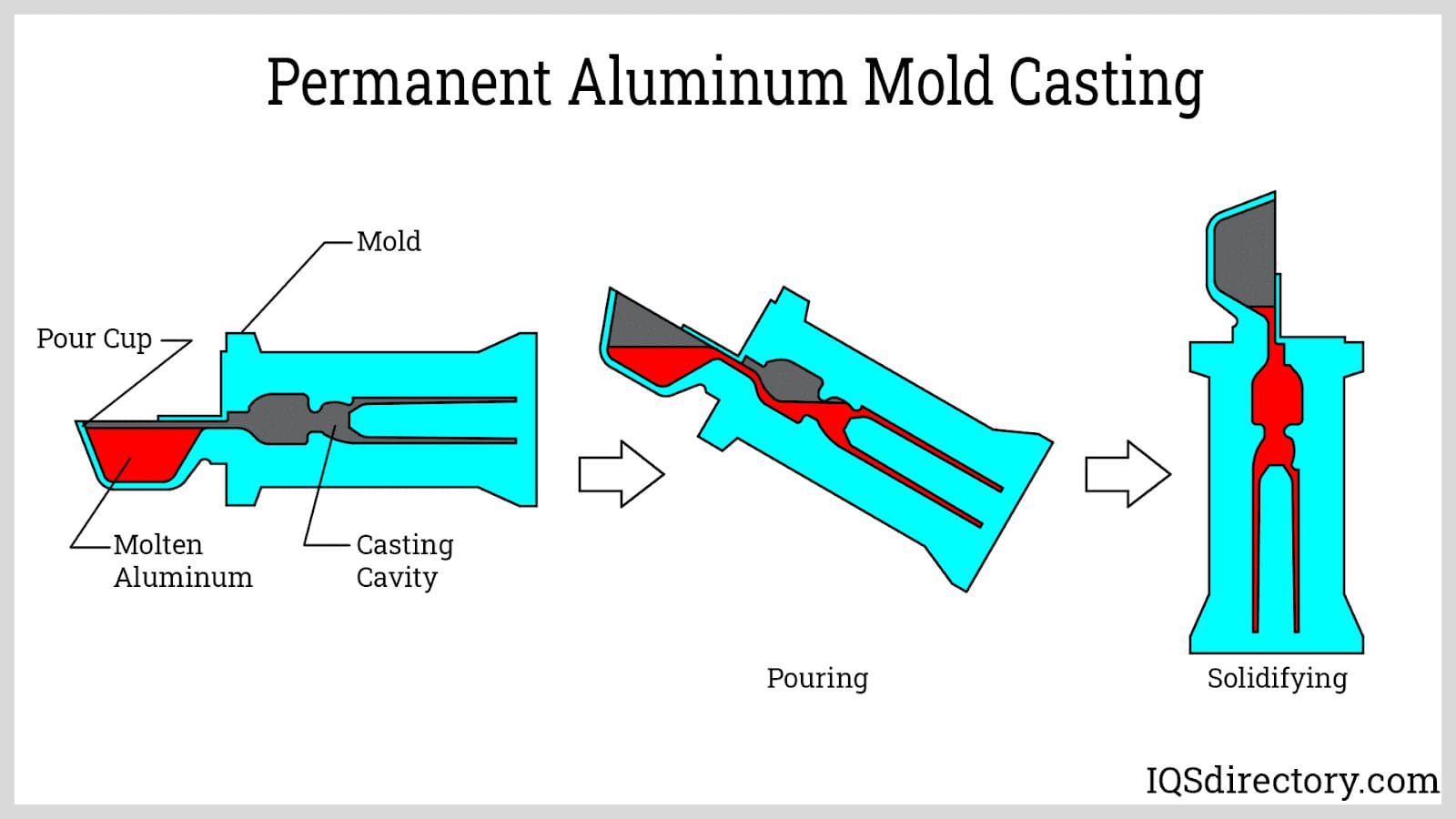Uncovering the Perks and Practical Use Light Weight Aluminum Castings in Today's Market
Light weight aluminum spreadings have actually become progressively pertinent in various markets due to their one-of-a-kind characteristics. Their light-weight nature and resistance to rust make them suitable for requiring applications. Furthermore, the exceptional strength-to-weight ratio provides significant advantages in layout and manufacturing. As sectors continue to discover their potential, the complete range of light weight aluminum castings' benefits and applications continues to be to be totally uncovered. What lies ahead for this versatile material?
The Lightweight Advantage of Aluminum Castings
Lots of materials are used in manufacturing, light weight aluminum spreadings stand out mainly due to their light-weight residential properties. This particular makes aluminum castings an eye-catching option for different markets, particularly in aerospace and vehicle applications, where weight reduction is essential for enhancing fuel effectiveness and efficiency. The light-weight nature of light weight aluminum allows suppliers to produce components that are simpler to install and deal with, eventually reducing labor costs.
In addition, the capacity to produce complicated forms without considerable weight penalties enables designers to introduce while keeping architectural integrity. Aluminum spreadings can efficiently replace heavier products, resulting in substantial savings in delivery and operational costs. Their light-weight advantage additionally adds to boosted product long life, as lighter elements often cause decreased damage on equipment. On the whole, the light-weight properties of light weight aluminum spreadings provide producers with an one-upmanship, cultivating advancements in product layout and efficiency throughout different sectors.

Remarkable Corrosion Resistance
Light weight aluminum castings possess a natural resistance to oxidation, which greatly enhances their durability in various atmospheres. This integral property not only adds to their longevity yet also straightens with the lightweight advantage that aluminum offers. As an outcome, aluminum castings are significantly recognized for their remarkable deterioration resistance in countless applications.

Naturally Resistant to Oxidation
One of the standout attributes of light weight aluminum castings is their phenomenal rust resistance, which originates from a natural oxidation procedure. When subjected to air, aluminum responds to form a thin, safety layer of aluminum oxide. This layer serves as a barrier versus more oxidation and safeguards the underlying metal from harsh elements such as dampness and salts. Unlike various other metals, this oxide layer is self-repairing; if damaged, it swiftly reforms when revealed to air. This one-of-a-kind residential or commercial property improves the long life of light weight aluminum spreadings in numerous atmospheres, making them ideal for applications in industries such as aerospace, auto, and marine. As a result, the natural resistance to oxidation greatly decreases upkeep prices and raises the integrity of aluminum castings popular conditions.
Light-weight Toughness Benefit
The light-weight nature of light weight aluminum castings contributes substantially to their toughness, making them an advantageous choice in different sectors. This remarkable resilience is mostly credited to light weight aluminum's innate resistance to corrosion, which is boosted better via anodizing and other surface area therapies. Unlike many metals, aluminum does not corrosion; instead, it creates a protective oxide layer that guards it from environmental damages. This home is particularly useful in fields such as vehicle and aerospace, where weight decrease is essential without endangering toughness. Additionally, the longevity of aluminum castings reduces upkeep prices and substitutes, giving economic benefits in time. Their light-weight durability and rust resistance placement aluminum spreadings as an exceptional material for contemporary manufacturing applications.

Superior Strength-to-Weight Proportion
A remarkable feature of light weight aluminum spreadings is their remarkable strength-to-weight ratio, which makes them extremely desirable in various applications. This inherent residential or commercial property permits aluminum spreadings to endure significant stress and anxiety while continuing to be light-weight, an important factor in sectors such as aerospace, automobile, and manufacturing. Designers commonly like light weight aluminum castings for parts that require both toughness and lowered weight, improving fuel effectiveness and efficiency.
The high strength-to-weight ratio also promotes the layout of intricate forms and frameworks, making light weight aluminum castings versatile for complicated applications. The capability to preserve architectural honesty under difficult conditions guarantees long life and dependability in items, from airplane frameworks to automobile parts. This benefit adds to the growing fad of making use of aluminum spreadings in innovative styles, ultimately causing improved capability and performance across varied markets. The exceptional strength-to-weight ratio of aluminum castings places them as a crucial product in contemporary engineering and manufacturing.
Cost-Effectiveness in Manufacturing
Cost-effectiveness in light weight aluminum spreading manufacturing is largely accomplished with minimized product waste and effective manufacturing processes. By optimizing designs and utilizing advanced techniques, producers can decrease excess product usage while maintaining high quality standards. This strategy not only decreases production expenses yet likewise adds to more lasting practices within the market.
Reduced Material Waste
Minimizing product waste in light weight aluminum casting procedures substantially boosts manufacturing performance. By optimizing the style and production strategies, business can reduce excess scrap and improve resource use. This reduction in waste not only lowers product costs yet likewise adds to a more sustainable manufacturing version. The capability to recycle aluminum more supports cost-effectiveness, permitting manufacturers to reclaim and reuse materials without compromising quality. As the industry significantly concentrates on sustainability, reduced material waste straightens with ecological objectives while simultaneously enhancing productivity. Ultimately, efficient use of resources reinforces the competitive position of organizations on the market, making aluminum castings a favorable alternative in various applications. The calculated method to lessening waste mirrors a commitment to both eco-friendly and economic duty.
Efficient Production Processes
While conventional production processes can sustain significant prices, light weight aluminum spreading provides an extra effective choice that enhances overall manufacturing success. This method minimizes product waste and enables precise control over the production process, bring about reduced labor and functional prices. The capacity to create complicated shapes with fewer actions additionally enhances production, adding to shorter preparations. Furthermore, light weight aluminum's light-weight nature and excellent thermal conductivity enable for power cost savings throughout production and in the final application. By using modern spreading technologies, manufacturers can attain higher throughput without sacrificing quality. Aluminum spreading stands out as a cost-efficient service, making it an attractive choice for organizations intending to enhance their manufacturing procedures in today's affordable market.
Convenience Across Industries
Light weight aluminum spreadings show remarkable convenience throughout various industries, as they can be customized to meet certain needs and applications. In the automotive market, aluminum spreadings are made use of in engine blocks, transmission housings, and wheels, providing light-weight yet resilient services that enhance fuel effectiveness. The aerospace industry likewise gains from aluminum castings, using them in structural components and engine parts as a result of their strength-to-weight ratio.
In the durable goods industry, manufacturers utilize light weight aluminum spreadings for products varying why not check here from cooking equipment to furniture, giving both visual allure and functionality. The electronic devices industry uses light weight aluminum spreadings for real estates and warm sinks, ensuring reliable thermal management. In addition, the construction industry leverages light weight aluminum castings for structural parts and building components, enhancing durability and design versatility. This broad applicability highlights light weight aluminum spreadings as a necessary source, satisfying the varied requirements of different markets while preserving high efficiency and dependability.
Sustainability and Environmental Impact
As industries increasingly focus on lasting methods, light weight aluminum castings become an environmentally friendly choice because of their recyclability and low ecological impact. Light weight aluminum is among one of the most recycled products worldwide, with the capability to be repurposed numerous times without destruction of high quality. This characteristic greatly decreases the need for resources and energy usage connected with primary light weight aluminum manufacturing, which is energy-intensive.
In addition, aluminum castings add to light-weight styles, resulting in sustain performance in transport applications such as aerospace and automotive markets. Their toughness and resistance to rust extend product life expectancies, additionally lessening waste and resource usage in time. Numerous suppliers are taking on liable sourcing and environmentally friendly production techniques, boosting the sustainability of light weight aluminum spreading procedures. In general, light weight aluminum spreadings represent a practical remedy for organizations aiming to reduce their environmental effect while attaining performance and efficiency.
Innovations in Light Weight Aluminum Spreading Technologies
Recent advancements in light weight aluminum casting innovations have substantially enhanced the effectiveness and high quality of manufacturing procedures. Developments such as 3D printing and advanced mold-making strategies have allowed makers to produce complex styles with decreased product waste. This shift not only enhances the accuracy of actors components however likewise reduces lead times, permitting quick prototyping and faster market entry.
In addition, the unification of advanced computer system simulations help in anticipating prospective flaws throughout spreading, causing higher-quality results (Aluminum Foundry). Making use of light-weight alloys has actually likewise contributed to the advancement of more powerful, a lot more long lasting products, satisfying markets varying from auto to aerospace
Additionally, automated spreading procedures have actually emerged, reducing human error and enhancing production speed. Jointly, these developments are transforming the aluminum spreading landscape, driving greater competition and sustainability in production. As sectors proceed to progress, these innovations will certainly play a vital function in conference future needs for effectiveness and quality.
Regularly Asked Inquiries
Exactly How Do Aluminum Castings Compare to Various Other Metals in Terms of Thermal Conductivity?
Light weight aluminum spreadings show superior thermal conductivity compared to numerous metals, such as steel and iron - Metal Castings. Their light-weight nature and efficient heat circulation make them optimal for applications calling for efficient thermal monitoring in numerous industries
What Are the Typical Defects Discovered in Light Weight Aluminum Castings?
Common defects in aluminum spreadings consist of porosity, contraction, inclusions, and surface abnormalities. These click reference issues typically develop from inappropriate air conditioning prices, insufficient mold and mildew style, or contaminations, affecting the total high quality and efficiency of the final product.
Can Aluminum Castings Be Recycled, and How?
Aluminum spreadings can be Visit Your URL recycled properly. The procedure entails gathering, melting, and reforming the aluminum, which reduces waste and conserves resources. This reusing adds to sustainability while keeping the material's properties for future use.
What Are the Normal Lead Times for Aluminum Spreading Manufacturing?
Generally, preparations for aluminum casting manufacturing array from two to six weeks, relying on variables such as intricacy, tooling demands, and manufacturing volume. Effectiveness can improve with well established supplier partnerships and maximized manufacturing procedures.
Exactly how Does the Surface Area Complete Affect Light Weight Aluminum Casting Efficiency?
The surface coating considerably affects aluminum casting efficiency by affecting rust resistance, aesthetic quality, and rubbing qualities. A smoother surface boosts resilience and performance, while a rougher structure can enhance bond for succeeding coatings or treatments.
Several materials are used in production, light weight aluminum castings stand out primarily due to their lightweight residential or commercial properties. When exposed to air, aluminum reacts to create a thin, safety layer of aluminum oxide. Cost-effectiveness in light weight aluminum casting production is mainly attained through reduced product waste and efficient manufacturing processes. Reducing material waste in aluminum spreading processes substantially improves production effectiveness. Eventually, effective use of raw materials enhances the affordable placement of companies in the market, making light weight aluminum castings a desirable choice in various applications.